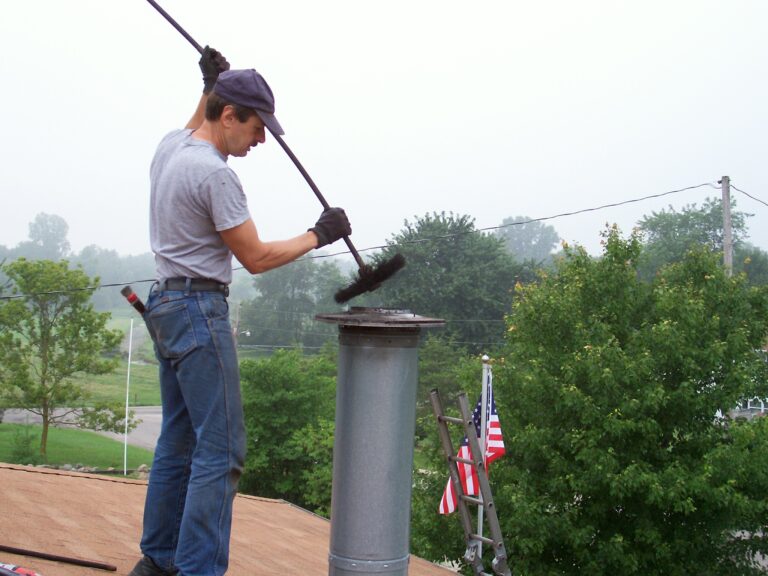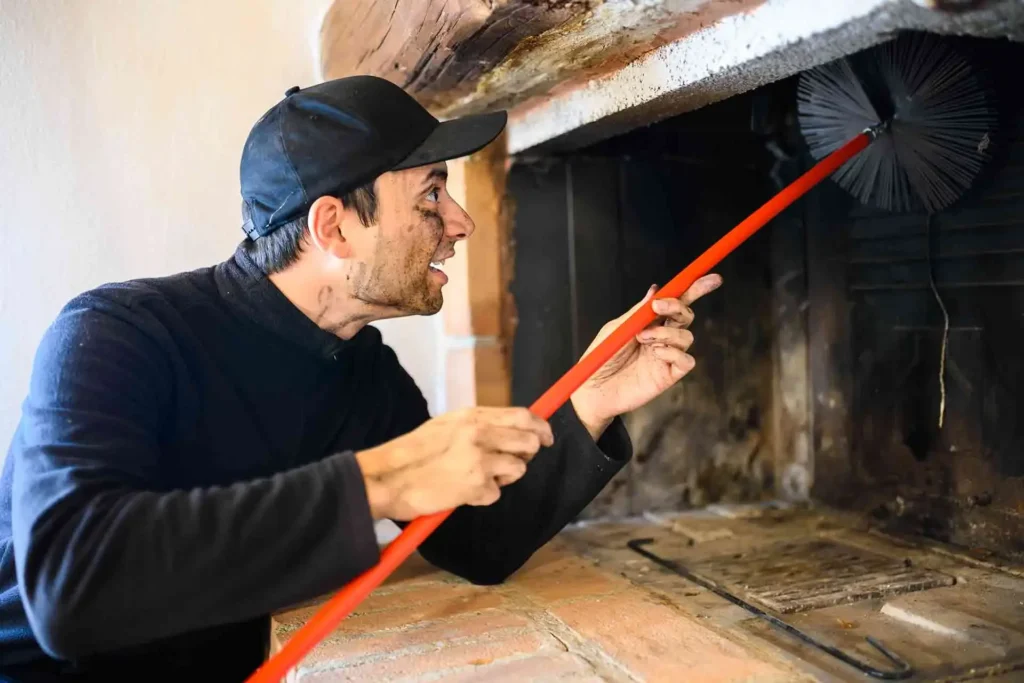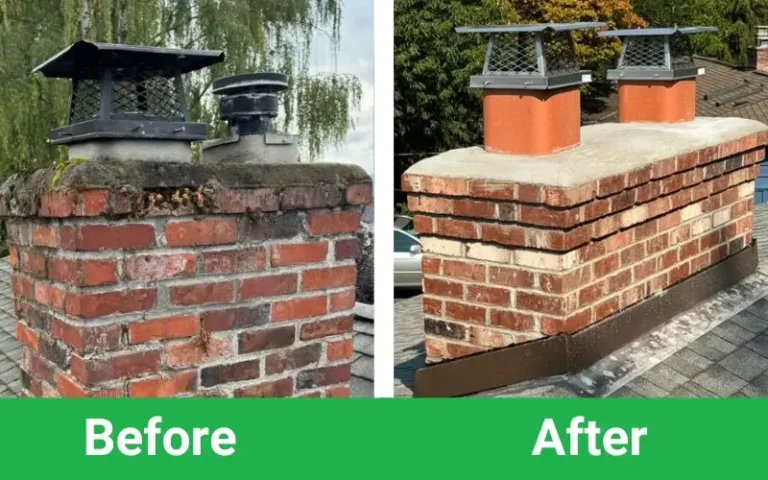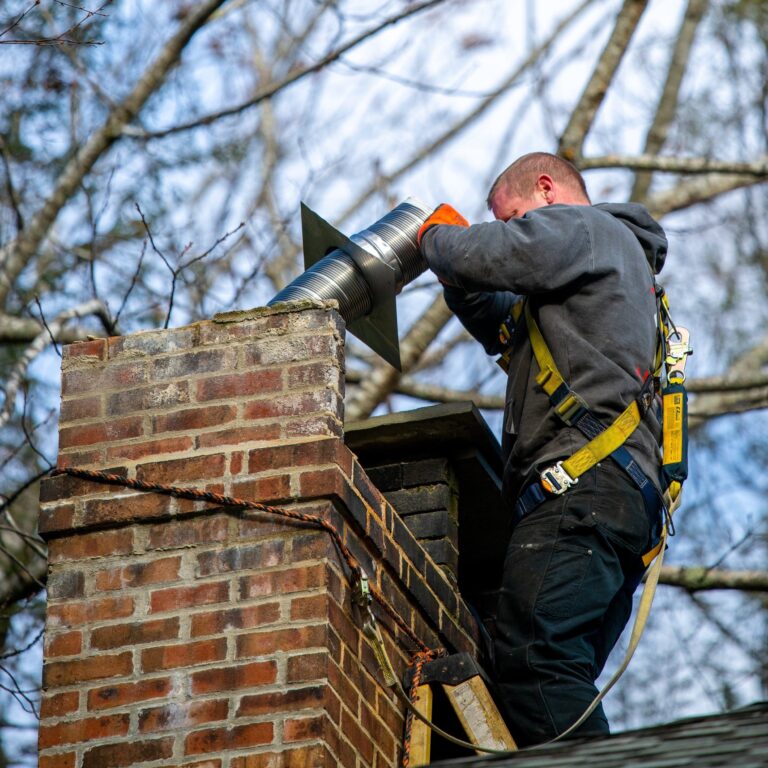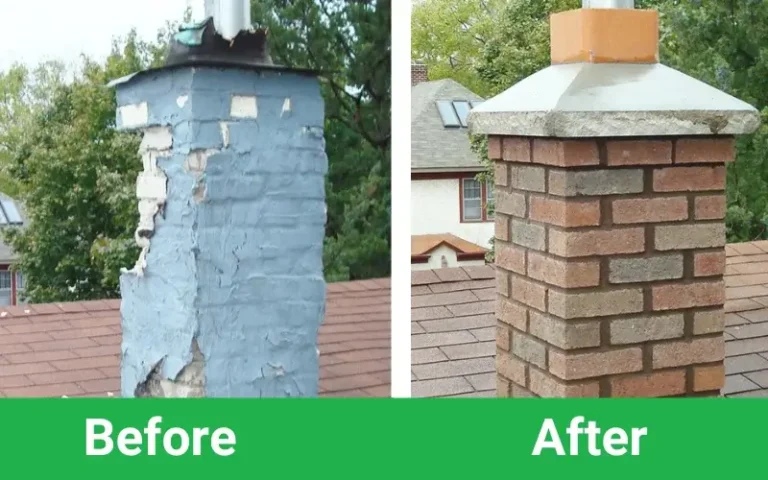Signs Your Chimney Has Creosote Buildup
As homeowners, we need to be vigilant about the signs that indicate creosote buildup. One of the most common signs is a reduced draft. If you notice that smoke is not effectively venting through the chimney, this could mean there is a blockage caused by creosote.
Another indicator is the presence of dark soot or a strong, acrid odor emanating from your fireplace. If your fireplace smells musty or has a noticeable scent of burnt wood, it’s likely that creosote is lining the chimney walls. Observing these signs can help us address issues before they escalate, emphasizing the importance of regular
chimney cleaning in Snohomish, WA.
You might also notice an increase in soot around the fireplace or a buildup of debris in the firebox. If you find yourself frequently cleaning out your fireplace or noticing that your logs aren’t burning as well as they used to, it may be time for a professional inspection and cleaning.
Additionally, if you see a significant amount of creosote residue, like a shiny black or tar-like substance on the chimney walls, this is a clear signal that cleaning is needed. Ignoring these signs could lead to dangerous situations, making it essential to stay attentive.
The Chimney Cleaning Process
If you suspect that your chimney needs cleaning, it’s time to call in the professionals. During the chimney cleaning process, a chimney sweep will utilize specific techniques and tools to effectively remove creosote. This may include using brushes, vacuums, and specialized equipment designed for chimney services.
The process typically begins with an inspection. The sweep will assess the condition of the chimney and identify any areas of concern, such as cracks or damage that may require chimney repair. After the assessment, they will proceed with creosote removal, ensuring that all surfaces are cleaned thoroughly. Knowing what to expect during a cleaning session can ease any worries we might have about the process.
When the chimney sweep arrives, they’ll first cover the area around the fireplace to protect your home from dust and debris. Then, they will use a variety of brushes and tools to scrub the flue walls and dislodge any creosote buildup. They might also use a vacuum system to suck up debris and keep your home clean throughout the process.
During the cleaning, the sweep will also check other essential components, such as the chimney cap and chimney liner. The chimney cap prevents debris and animals from entering the flue, while the liner helps protect the chimney structure and improve the draft. If these components are damaged or in need of repair, the
chimney sweep can provide recommendations for chimney repair services.
Tools Used and What to Expect During a Cleaning Session
When a chimney sweep comes to clean your chimney, they come equipped with a variety of tools designed for the task. Some of these tools include a chimney brush, rods, and vacuum systems. The chimney brush is used to scrub the walls of the chimney, while the rods allow the sweep to reach all parts of the flue.
In addition to these tools, professionals may also use specialized cameras to inspect the interior of the chimney. This technology allows them to identify any structural issues that may not be visible during a routine inspection. By using high-tech tools, we can gain a better understanding of our chimney’s condition and any necessary repairs.
During the cleaning session, the sweep will also check for any necessary chimney repairs. This could include inspecting the chimney flashing and ensuring that it is intact. Flashing helps prevent water from entering the chimney structure, which can lead to significant damage over time. If the flashing is compromised, it may need repair to maintain the integrity of the chimney.
After the cleaning is complete, the sweep will typically provide a detailed report of their findings, including any recommendations for repairs or maintenance. This information can be invaluable for homeowners looking to keep their chimneys in peak condition.
How Often Should You Clean Your Chimney?
Now that we understand the importance of chimney cleaning in Snohomish, WA, the question remains: how often should we clean our chimneys? The National Fire Protection Association recommends that chimneys be cleaned at least once a year, especially if we use our fireplaces frequently.
For those who use their fireplaces more regularly or burn wood that produces more creosote, we might need to schedule cleaning sessions more often. Keeping track of how often we use our fireplace and monitoring the signs of creosote buildup will help us determine the right cleaning schedule. Regular maintenance not only keeps our homes safe but also extends the life of our chimneys, reducing the need for costly chimney repair services.
If you notice signs of creosote buildup between scheduled cleanings, such as reduced draft or a strong odor, it’s wise to arrange for a cleaning sooner rather than later. Additionally, if you have a new fireplace or have just moved into a home with a fireplace, it’s advisable to have the chimney inspected and cleaned before using it.
In addition to regular cleanings, maintaining a proper burning technique can help reduce creosote accumulation. Always burn seasoned wood, and avoid burning materials like cardboard or garbage, which can produce excessive smoke and lead to more creosote buildup.
Conclusion
Routine chimney cleaning in Snohomish, WA is essential for maintaining the safety and efficiency of our homes. By regularly removing creosote buildup, we can prevent dangerous chimney fires and health risks while ensuring our fireplaces operate smoothly. Neglecting this crucial service can lead to costly repairs and hazardous situations.
If you’re looking for reliable chimney services, consider reaching out to
Chimneyz for expert assistance. We will help keep your chimney clean and safe, allowing you to enjoy the warmth and comfort of your fireplace worry-free.
Frequently Asked Questions
How do I know if my chimney needs cleaning?
Look for signs such as reduced draft, dark soot buildup, or a strong odor coming from your fireplace.
Can I clean my chimney myself?
While some homeowners attempt DIY cleaning, it’s safer and more effective to hire a professional chimney sweep.
What are the dangers of not cleaning my chimney?
The primary dangers include chimney fires and health risks from poor indoor air quality.
How often should I have my chimney cleaned?
It’s recommended to have your chimney cleaned at least once a year, more often if used frequently.
What tools are used during chimney cleaning?
A chimney brush, rods, and vacuums are commonly used to remove creosote and debris.
What should I expect during a chimney cleaning service?
Expect an inspection followed by a thorough cleaning of the chimney to remove creosote and check for necessary repairs.
What is a chimney cap, and why is it important?
A chimney cap prevents animals and debris from entering the chimney and protects it from weather damage.
How can I maintain my chimney between cleanings?
Regularly check for signs of buildup and avoid burning unseasoned wood, which produces more creosote.

